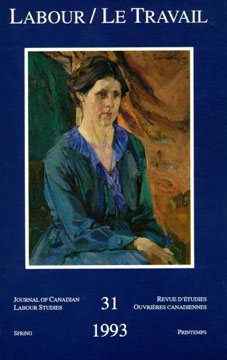Abstract
The essay explores relations of gender and class, and the strategies developed by male unionists in defence of masculine craft status in the International Typographical Union (ITU), the International Printing Pressmen's and Assistants' Union (IPP&AU), and the International Brotherhood of Bookbinders (IBB), between 1850 and 1914.
The ITU and IPP&AU organized along masculine craft lines and effectively defended their status within the workplace with industrial capitalist incursions and the mechanization of the production process. A crisis to male domination of typesetting occurred with the introduction of machine typesetting in newspaper production during the early 1890s. The ITU succeeded in securing control over the operations of the machines for its predominately male membership. By the mid-19th century the work of press feeder was defined as unskilled work suitable for women and boys. With the introduction of larger and faster presses during the last two decades of the 19th century, the IPP&AU struggled to appropriate the task for masculinity using the male breadwinner ideal. The IBB actively supported the organization of women bindery workers from its inception in 1892, albeit with the intent of protecting the interests of journeymen.
Résumés
L'étude examine les rapports sociaux de sexe et de classe, et les pratiques syndicales masculines visant à défendre le statut des hommes de métier dans l'International Typographical Union (ITU), l'International Printing Pressmen's and Assistants' Union (IPP& AU), et l'International Brotherhood of Bookbinders (IBB), de 1850 à 1914.
Le statut dominant des typographes fut menacé au début des années 1890 par l'avènement de la machine à composer dans les imprimeries de journaux. L'ITU parvint toutefois à endiguer l'impact de la mécanisation en réservant le contrôle des nouvelles machines pour ses ouvriers syndiqués masculins. Par ailleurs, l'alimentation des presses fut d'abord perçu, depuis le milieu de 19e siècle, comme une tâche non spécialisée accessible aux femmes et aux garçons. Suite à l'introduction de presses plus massives et plus rapides, en fin de siècle, l'IPP&AU s'efforça de masculiniser cette tâche en professant l'idéologie patriarcale du soutien de famille. Bien qu'elle ait surtout voulu protéger les intérêts des travailleurs masculins, l'IPP se fit néanmoins partisane de la syndicalisation des femmes relieuses dès sa formation, en 1892.
